A Shenzhen audio gear maker's pursuit of green growth
Writer: Liu Minxia | Editor: Lin Qiuying | From: Shenzhen Daily | Updated: 2025-04-09
At first glance, Shenzhen Grandsun Electronic Co.’s sprawling campus in Longgang District resembles an urban arboretum more than an industrial complex.
Lush greenery lines walkways, potted plants adorn workstations, and sunlight filters through foliage onto assembly lines where headphones take shape — a harmonious blend of industry and nature that embodies the company’s vision of sustainable manufacturing.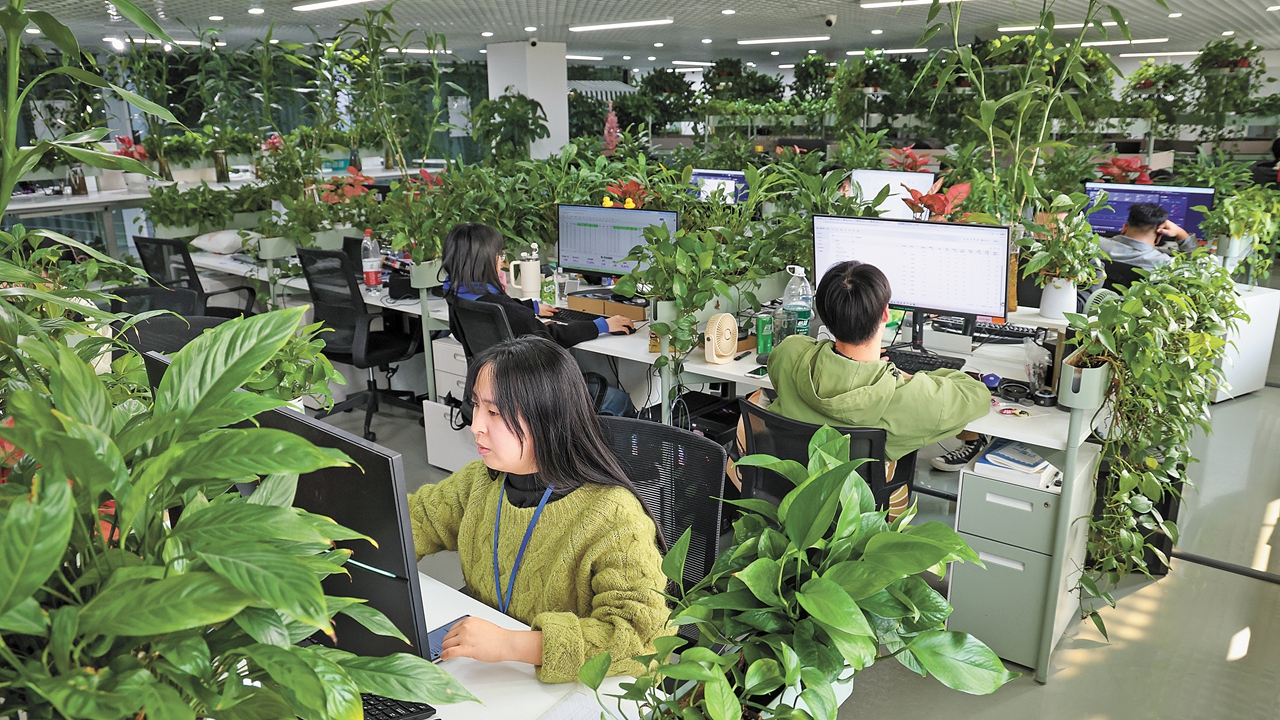
Employees are seen at work at their workstations adorned with potted plants at the headquarters of Shenzhen Grandsun Electronic Co. in Longgang District. Photos from Xinhua
The audio equipment maker, known for OEM (original equipment manufacturer) partnerships with global brands like Dyson and Skullcandy as well as its own Cleer line, has emerged as a pioneer in China’s green industrial transformation, aligning with the nation’s “dual carbon” goals.
Roots of a green vision
Chairman Wu Haiquan’s childhood in rural Ezhou, Hubei Province, planted the seeds for this ecological ethos.
“Villagers treated trees as living assets—symbols of wealth and beauty that could even serve as dowries,” Wu recalled. “Now, the Hainan rosewood and camphor trees in our industrial complex are assets in their own right.”
Wu’s passion for planting trees and commitment to sustainability have transformed the OEM-turned-innovator into a testbed for green manufacturing.
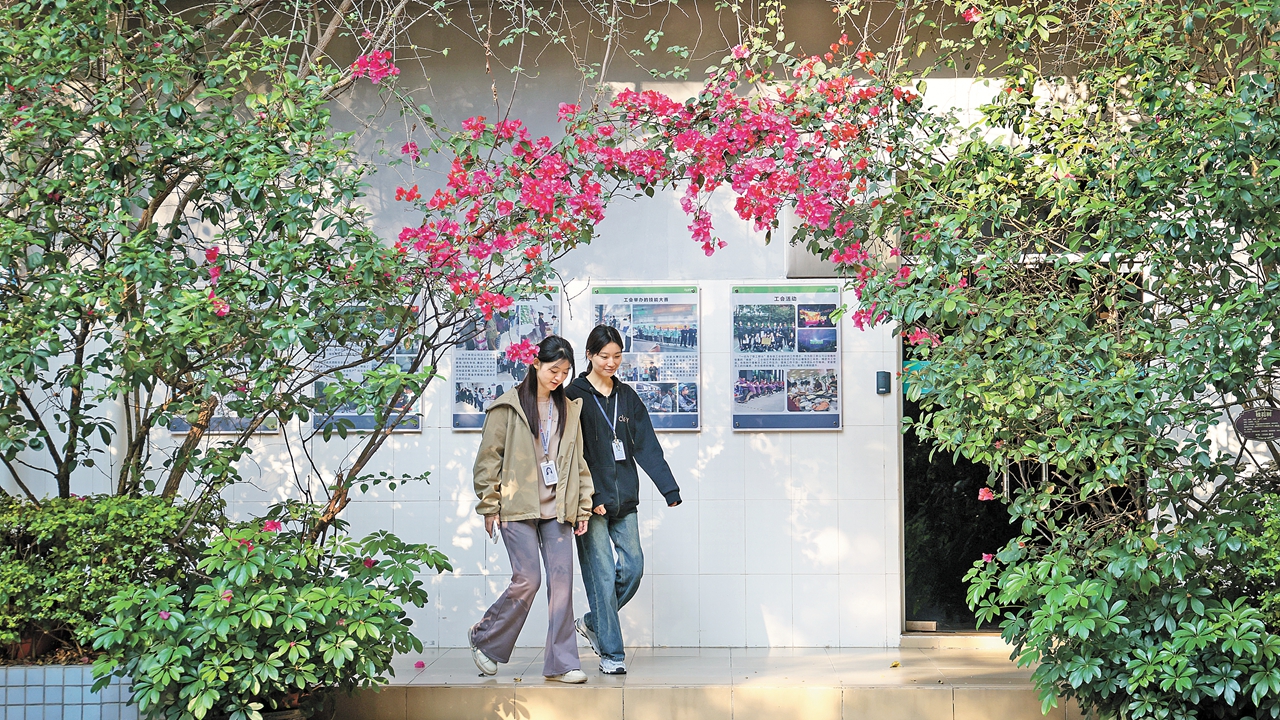
Employees walk out of the Grandsun campus after work.
Located in the Shenzhen International Low-Carbon City, Grandsun has seen significant growth since its humble beginnings in the 1990s. What started as a cable workshop now operates two sprawling eco-factories in Shenzhen and Deqing in central Guangdong, where 40% of floor space is dedicated to vertical gardens and solar-charged atriums. The company specializes in researching, manufacturing, and branding audio gear, serving various international brands while also promoting its own Cleer brand, which has gained popularity both domestically and internationally.
The company’s commitment to greenery goes beyond aesthetics — it’s a strategic response to evolving market demands. With major clients facing stricter carbon regulations, Grandsun’s early adoption of sustainable practices has positioned it ahead of the curve.
Wu explained that failing to embrace green manufacturing could increase export costs and jeopardize their business prospects — particularly in light of impending carbon tariffs from the European Union and the United States.
The company has earned multiple sustainability certifications, including zero carbon factory status, and aims to peak emissions by 2025 before achieving full carbon neutrality by 2050, in line with China’s national goals of reaching carbon emission peak by 2030 and carbon neutrality by 2060.
“Our trees aren’t just decor — they’re carbon sinks helping neutralize emissions,” said Peng Jiugao, the company’s research and development division director.
Zero-carbon breakthrough
On last year’s Earth Day, Grandsun unveiled its Cleer ARC 3, touted as the world’s first zero-carbon open-ear earbuds. While food and beverage companies have made strides in carbon neutrality, achieving this in electronics — characterized by complex supply chains and hundreds of components — remains rare.
R&D director Peng said the ARC 3 obtained its carbon neutrality certification by addressing not only the production process but also the entire lifecycle of the product.
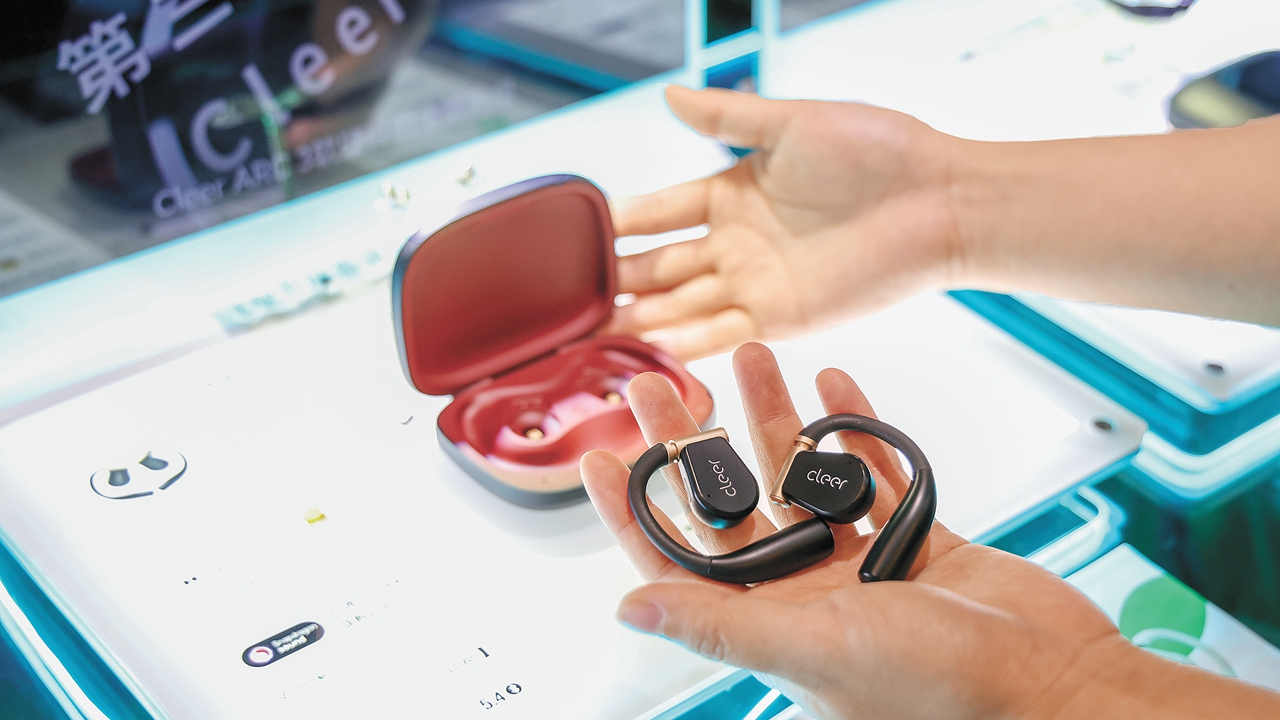
A pair of Grandsun's Cleer ARC 3, which is touted as the world’s first zero-carbon open-ear earbuds.
“Manufacturing accounts for just 7% of the carbon footprint. The real challenge was optimizing the 90% tied to materials and usage. So every component was scrutinized for the ARC 3,” said Peng.
The team replaced glue-based waterproofing with removable nano-coatings and eliminated paper-based workflows, saving an estimated 1 million A4 sheets annually.
Grandsun has successfully integrated rapid charging and ultra-low-power features to reduce energy consumption during the product’s usage phase. As a result, each ARC 3 consumes only about 3.2 kWh of electricity over its lifetime.
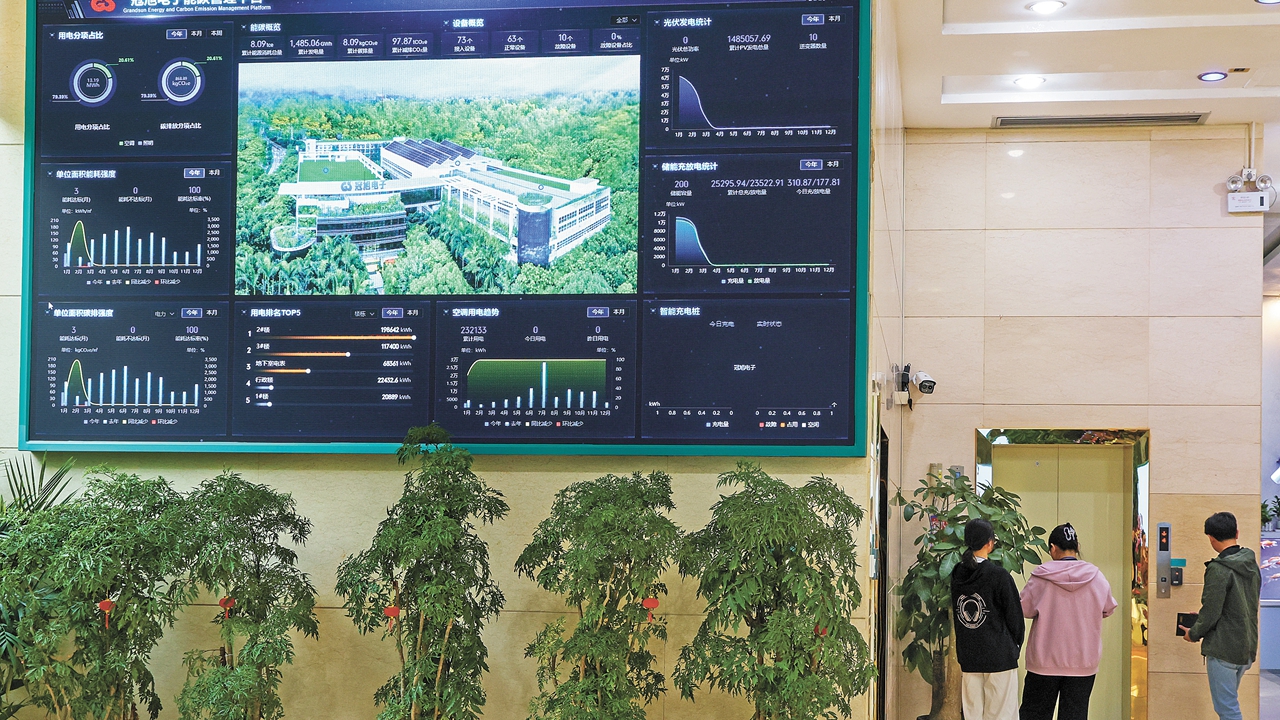
A real-time monitor of the company's carbon emissions is seen inside a Grandsun building in Longgang.
The company has also invested in renewable energy, green materials, and energy-efficient manufacturing technologies to further mitigate emissions.
Green ripples across the supply chain
The impact extends beyond production. At Grandsun’s Deqing facility—where 60% of employees are returnees from coastal factories — worker satisfaction is markedly high. “The fresh air and greenery make long shifts sustainable,” said production line leader Xian Jiewen, noting 30% lower turnover than industry averages. Over 60% of the facility’s roughly 1,000 employees are returnees who left coastal factories for hometown jobs.
The company has also forged innovative partnerships, such as bundling ARC 3 headphones with Deqing orange sales to support local agriculture.
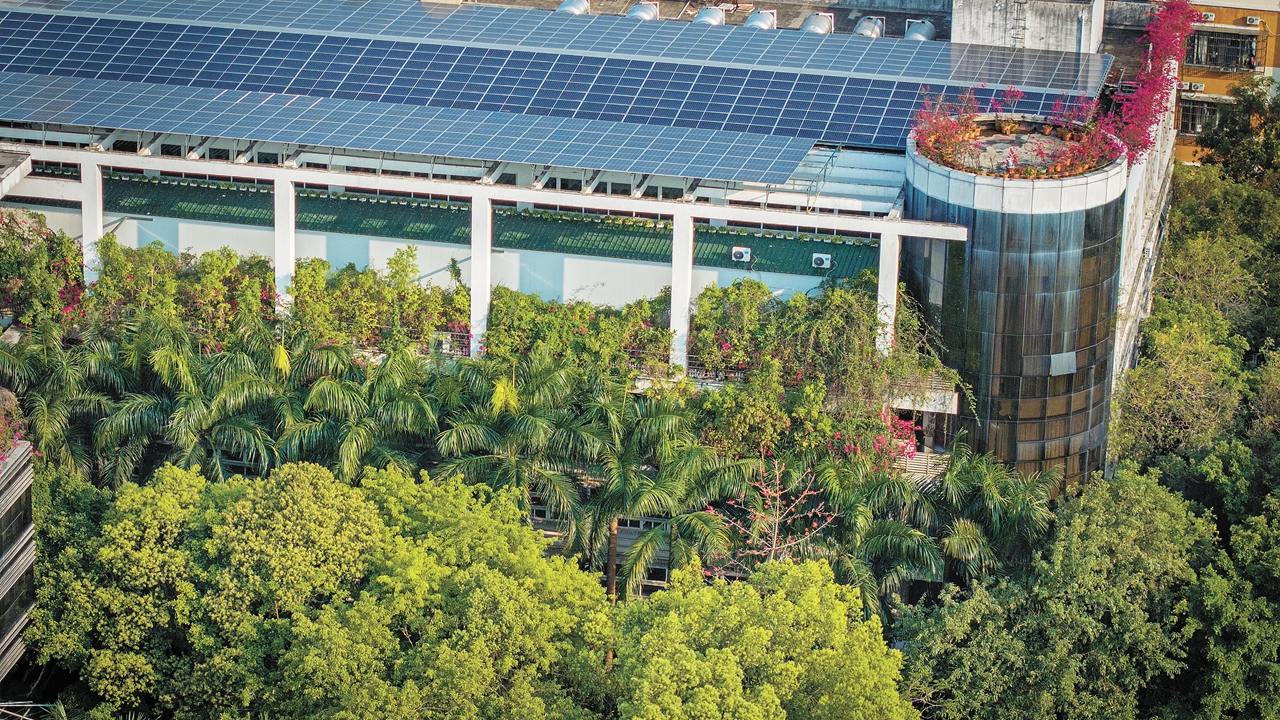
An office building of Shenzhen Grandsun Electronic Co. in Longgang is surrounded by trees and equipped with rooftop solar panels.
“Cleer and oranges both grow from green ecosystems,” Wu said during a livestream that featured Deqing’s harvest alongside headphones. “High-quality development must be rooted in sustainability.”
China’s 2025 Government Work Report reaffirms the nation’s commitment to advancing its dual carbon goals through “active and prudent” measures. A key focus is the launch of the second batch of national carbon peaking pilot areas, aiming to establish zero-carbon industrial parks and factories as model projects for systemic decarbonization.
With Shenzhen designated as a national carbon-peak pilot city, Grandsun is positioning itself as a model for sustainable manufacturing.
Wu envisions the company’s products as ambassadors of its green philosophy, extending its impact beyond factory walls to employees, consumers, and supply chain partners alike. This vision of harmonizing ecological and commercial value is taking tangible form through innovative design and material choices.
Chief designer Alex Arie’s team employs recycled materials — from shoe-derived silicone to stone-plastic composites — to create visually striking products.
“Our products must tell a story where every material choice is a chapter in China’s green transition,” Wu said. “Our goal isn’t just compliance. It’s to prove that ecology and economy can thrive together.”